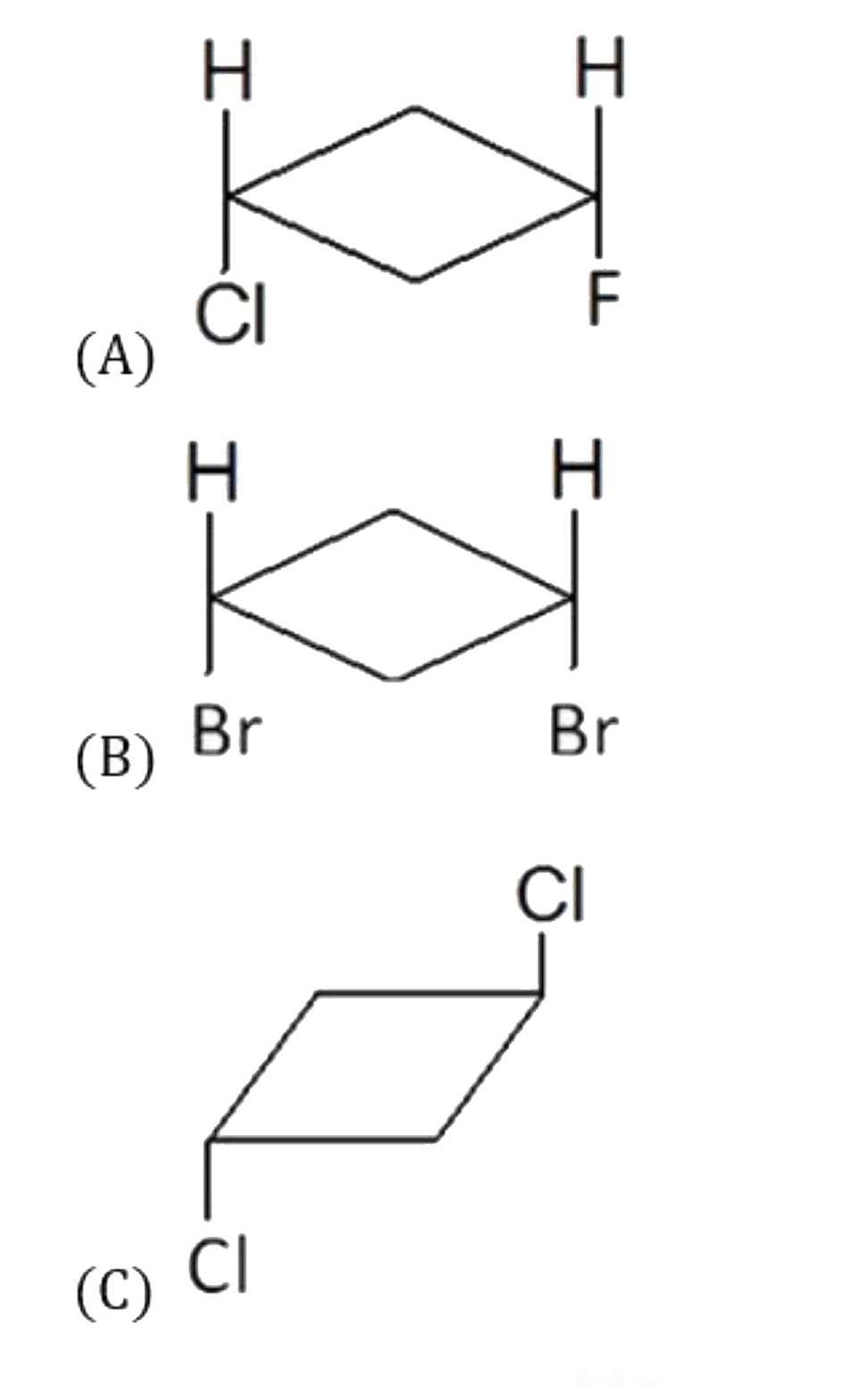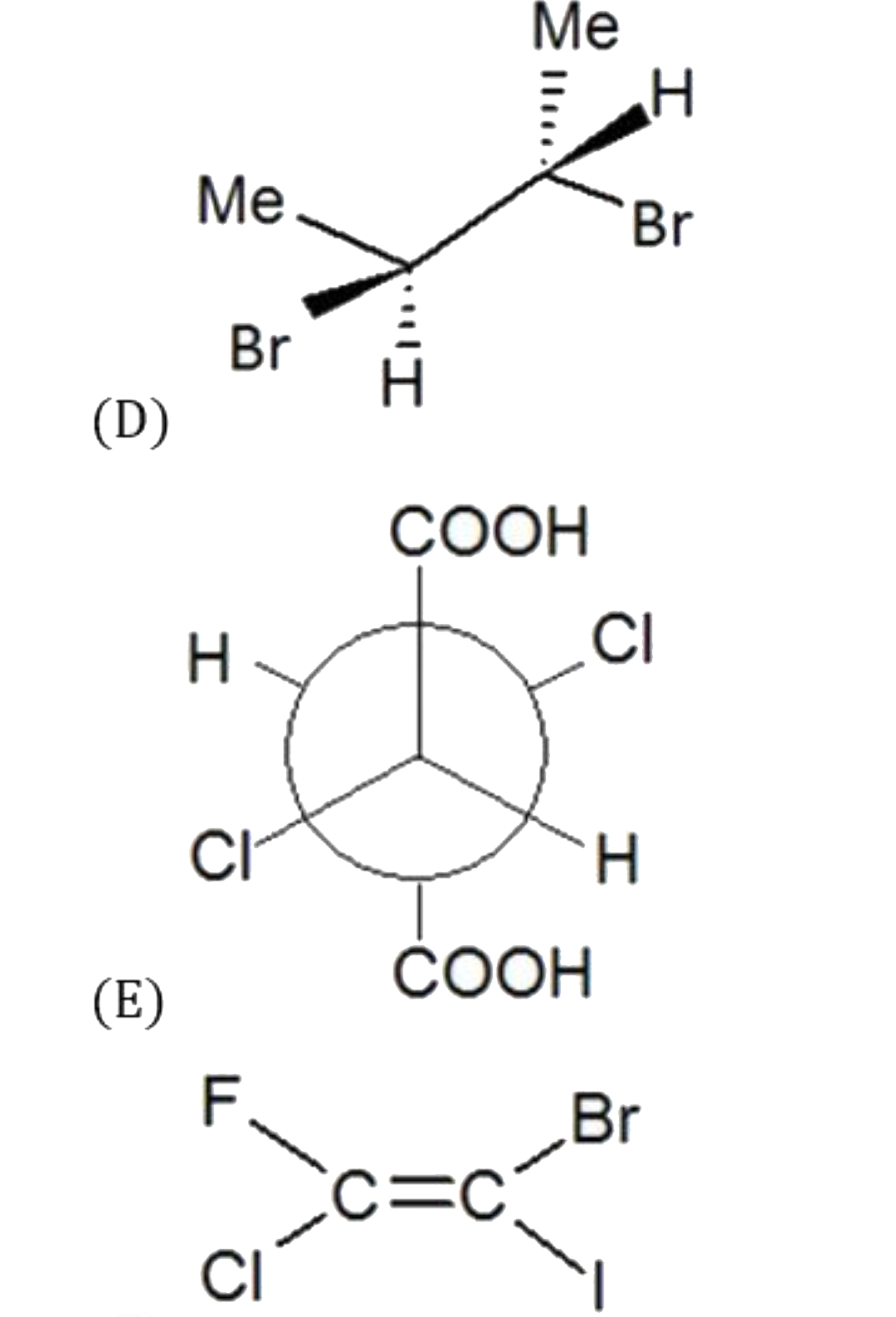Which of the following are optically active?




The correct Answer is:A, B, D
To determine which of the given compounds are optically active, we need to follow these steps:
Step 1: Understand the criteria for optical activity
A compound is considered optically active if:
1. It has at least one chiral carbon atom (a carbon atom that is bonded to four different groups).
2. It does not possess a plane of symmetry.
Step 2: Analyze each compound
Compound 1:
- Check for chiral carbon: Identify if there is a carbon atom bonded to four different groups.
- Check for plane of symmetry: Determine if the compound can be divided into two symmetrical halves.
- Conclusion: This compound has a chiral carbon, but it has a plane of symmetry, so it is not optically active.
Compound 2:
- Check for chiral carbon: Identify if there is a carbon atom bonded to four different groups.
- Check for plane of symmetry: Determine if the compound can be divided into two symmetrical halves.
- Conclusion: This compound has a chiral carbon with four different substituents and does not have a plane of symmetry, making it optically active.
Compound 3:
- Check for chiral carbon: Identify if there is a carbon atom bonded to four different groups.
- Check for plane of symmetry: Determine if the compound can be divided into two symmetrical halves.
- Conclusion: This compound has groups that are not different (due to the presence of CS2 groups), and it may also have a plane of symmetry, thus it is not optically active.
Step 3: Final determination
Based on the analysis:
- Optically Active Compound: Only the second compound is optically active.
- Not Optically Active Compounds: The first and third compounds are not optically active.
Final Answer:
The optically active compound among the given options is the second compound.
---
A compound is considered optically active if:
1. It has at least one chiral carbon atom (a carbon atom that is bonded to four different groups).
2. It does not possess a plane of symmetry.
- Check for chiral carbon: Identify if there is a carbon atom bonded to four different groups.
- Check for plane of symmetry: Determine if the compound can be divided into two symmetrical halves.
- Conclusion: This compound has a chiral carbon, but it has a plane of symmetry, so it is not optically active.
- Check for chiral carbon: Identify if there is a carbon atom bonded to four different groups.
- Check for plane of symmetry: Determine if the compound can be divided into two symmetrical halves.
- Conclusion: This compound has a chiral carbon with four different substituents and does not have a plane of symmetry, making it optically active.
- Check for chiral carbon: Identify if there is a carbon atom bonded to four different groups.
- Check for plane of symmetry: Determine if the compound can be divided into two symmetrical halves.
- Conclusion: This compound has groups that are not different (due to the presence of CS2 groups), and it may also have a plane of symmetry, thus it is not optically active.
Based on the analysis:
- Optically Active Compound: Only the second compound is optically active.
- Not Optically Active Compounds: The first and third compounds are not optically active.
The optically active compound among the given options is the second compound.
Similar Questions
Which of the following be optically active ?
View SolutionWhich of the following is optically active?
View SolutionWhich of the following is optically active
View SolutionWhich of the following is/are optically active?
View SolutionWhich of the following is optically inactive ?
View SolutionWhich of the following is optical active subtance ?
View SolutionWhich of the following is not optically active?
View SolutionWhich of the following is not optically active?
View SolutionHow many of the following are optically active ?



View SolutionWhich of the following is an optically inactive compound?
View Solution
